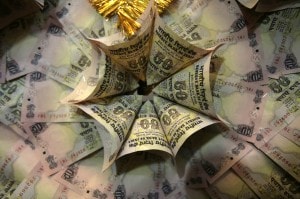It takes more than common sense, and good intentions, for even the noblest of ideas to gain traction and succeed.
As a side story to Chinese Premier Li Keqiang’s visit to India, the call has been renewed at the Indo-China CEOs Forum for an expansion of the rupee-renminbi-dollar trade and for expanded cooperation between the businesses of the two countries.
[caption id=“attachment_802689” align=“alignleft” width=“300”]  PTI[/caption]
At a surface level, of course, there is plenty of good sense in the idea, but where it falters is at the hurdle of market determination. The point was made that although the rupee-renminbi-dollar trade limit was set at $1 billion in 2012, no trade has taken place under this mechanism.
Not even enhanced business-to-business ties, in the manner that the forum recommended may be able to meet that threshold unless both sides to the business transaction find merit in trading in their own currencies. And the conditions for that haven’t yet been fully realised.
The distorted trade imbalance between India and China - which is today heavily weighted in favour of China - only amplifies the competing interests on the currency front. And although Premier Li has made comments suggesting that China is sensitive to India’s concerns regarding the trade imbalance, the reality is that as China’s economy ticks down, it is more keen to sell to India than to source from it.
Indian companies that source from China would, of course, prefer to pay in Indian rupees if they had an option; but given the sharp erosion in the Indian rupee in recent years, Chinese suppliers are rather more keen to price their exports to India in US dollars or the Chinese renminbi, which has been appreciating against the US dollar in recent times.
Impact Shorts
More ShortsBut given China’s trade dynamics - which are a product of its planned growth model, with primacy to exports - China doesn’t send out enough renminbi into the world. So the trade is denominated in US dollar by default, even though both supplier and procurer pay a small price for it.
That kind of market-determined trade dynamic cannot be changed merely on the strength of goodwill among nations and earnest hopes of an enhancement in the trade relationship.
China’s trade surplus with the world has come down from the peak that it witnessed barely a few years ago, when the yuan was considerably undervalued, but even today it is not falling fast enough for the world to be awash in renminbi.
And although mineral-rich countries like Australia, whose economy piggybacks Chinese growth, have in recent times indicated that they will invest in Chinese debt markets, the size of the latter even today isn’t big enough for the yuan to acquire traction as a freely accepted currency anywhere in the world.
A curious incident that occurred in Hong Kong last month is illustrative of the sentiments that ride such transactions. The Hong Kong dollar (which is pegged to the US dollar) was until last year valued higher (than the renminbi) against the US dollar.
But the steady rise in the yuan against the US dollar has meant that today the renmibi trades higher than the Hong Kong dollar. Many Hong Kong businesses have benefited from the influx of tourists and luxury shoppers from mainland China (who have been enthused by the yuan appreciation), and the renminbi is generally accepted in commercial transactions.
But last month, a Hong Kong taxi driver caused some consternation when he pointedly refused to be paid in Chinese yuan for his fare - and even ripped up and threw back the yuan currency notes that he had been paid. The fact that he declined a transaction that was weighted in his favour (since he was being paid 1:1 in renminbi, which is valued higher) and even gave up the fare, pointed to a deep-seated resentment that goes against the grain of economic self-interest.
In other words, even in Hong Kong, which is notionally Chinese territory and which benefits from Chinese trade and tourist inflows, there is anecdotal evidence of the unwillingness to bear the currency risk of doing business in renminbi. The showcase headlines that we see of tinpot little African countries like Zimbabe “dumping the US dollar” in favour the Chinese yuan - and even of India joining the “Asian dollar exlusion zone” - are the products of hyperbolic media commentaries and propagandist political rhetoric inspired by China.
The fact of the matter is that the currency of choice for trade transactions is determined by what’s called the “network effect”. We use it because others use it - and its’ easier to use it even though there are cheaper alternatives.
And until such time as the dynamics of trade relations change - that is, if China actually fixes its trade imbalance with India, and Chinese businesses have an incentive to hold Indian rupees or at least send out enough renminbi out into the world (including India) - no amount of wishful yearning for better trade cooperation will compel the market to switch currencies.


)

)
)
)
)
)
)
)
)



